
The emerald eye rasbora is a freshwater fish of the Cyprinidae family. These fish are small and slightly shiny with green eyes.
The emerald eye rasbora is a relatively social and calm fish and does well in an aquarium environment. Emerald eye rasboras are easy to purchase and easy to care for as well.
TABLE OF CONTENTS
Emerald Eye Rasbora Facts & Overview
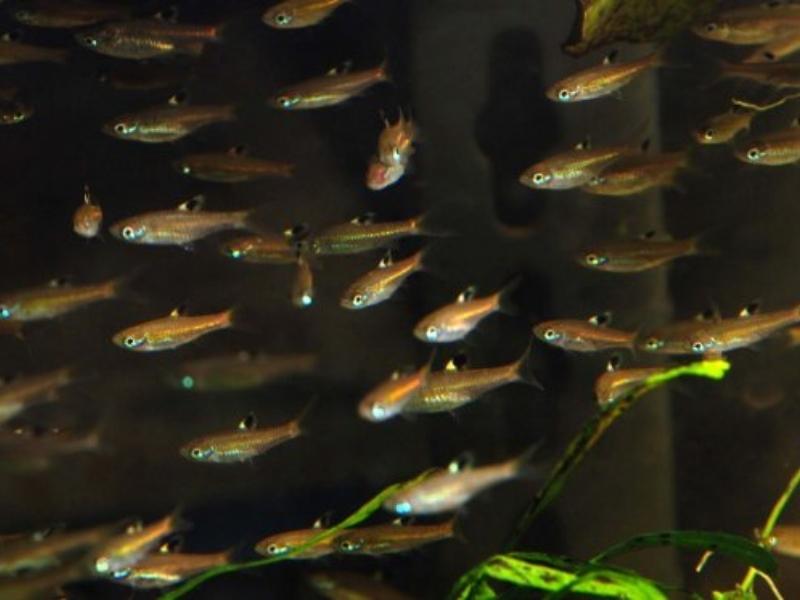
| Scientific name: | Brevibora dorsiocellata |
| Common names | Emerald eye rasbora, green-eyed rasbora, eyespot rasbora |
| Distribution: | Indonesia, Malay Peninsula |
| Size: | Approximately 2 inches |
| Life expectancy: | 2–5 years |
| Color: | Metallic and silver-ish body, yellow dorsal fin with black spot in the center |
| Diet: | Omnivore |
| Temperament: | Peaceful, social, active |
| Minimum tank size: | 10–20 gallon tank |
| Temperature: | 68–77°F |
| pH: | 5–7.5 |
| Hardness: | 2–12 dGH |
| Care level: | Moderate |
| Breeding: | Egg scatterers |
Origin
In the wild, emerald eye rasboras are found in freshwater areas of Indonesia and the Malay Peninsula.
While they are popular aquarium fish, emerald eye rasboras face challenges in the wild. Their natural habitat is being threatened by the palm oil industry and other problems.
Emerald eye rasboras live in blackwater streams and rivers linked to old forest peat swamps, where the water is softer and more acidic, and the lighting is usually dim. They prefer a lot of vegetation, as their natural habitat is scattered with leaves and twigs.
Adult Size and Lifespan
The emerald eye rasbora is relatively small, usually growing to only around 2 inches.
The female emerald eye rasboras are a bit larger and have rounder stomachs than the males. Wild versus captive emerald eye rasboras do not seem to differ in size.
Emerald eye rasboras live an average of 2–5 years. Proper care will increase a fish’s chances of a longer lifespan.
Availability
Finding emerald eye rasboras in pet stores is usually easy. Since these fish are popular, they are available in several stores, including Aquarium Fish Sale and Live Aquaria.
You can buy several at a time for less than $20 dollars, which is good news because emerald eye rasboras prefer to be with a group of their kind.
Appearance & Behavior
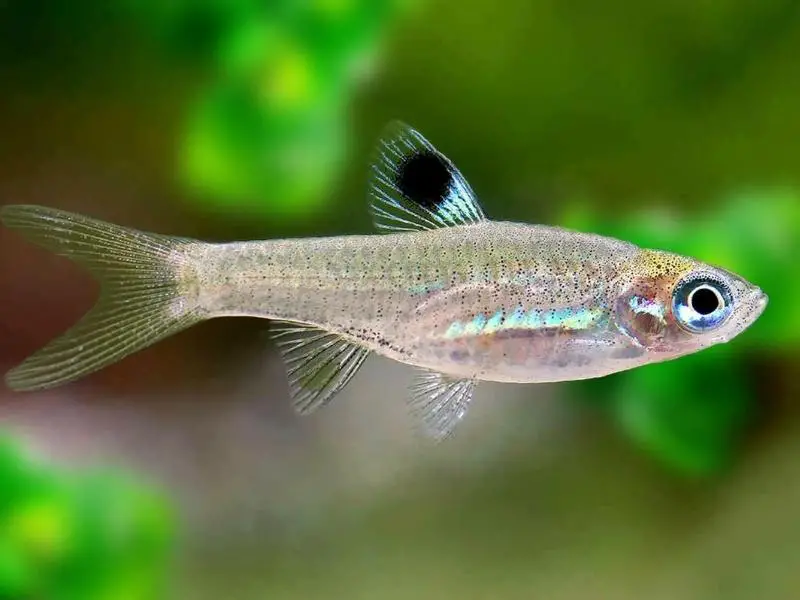
The most unique quality of the emerald eye rasboras’ is their emerald-colored eyes that give them their name.
Emerald eye rasboras are calm fish who keep to themselves and prefer to live in a group with other fish of their species.
Colors, Patterns, Fins, and Sex Differences
Emerald eye rasboras have a yellow dorsal fin with a black dot in the middle, which is one of their more distinct features.
Their bodies are somewhat silvery, and their green eyes are prominent. The emerald eye rasbora is a small fish with a long and relatively thin body.
Typical Behavior
Emerald eye rasboras are fast-moving fish that are very peaceful and non-aggressive by nature. They are relatively social and somewhat shy, preferring to be with a group of other emerald eye rasboras, as they feel safest that way.
A group of at least six fish is ideal. However, an even larger group could make the emerald eye rasbora feel more confident.
Emerald eye rasboras are quite active and like to be with other fish that swim quickly. They usually swim in the upper and mid-levels of the aquarium tank, though they may swim to the bottom at times.
Although they are considered to be relatively peaceful, emerald eye rasboras may also nip at other fish’s fins in some cases.
A larger, rather than smaller, group of emerald eye rasboras make an aquarium more interesting. The males will show off their best coloring to get the attention of the females, resulting in a more colorful tank.
Emerald Eye Rasbora Care & Tank Requirements
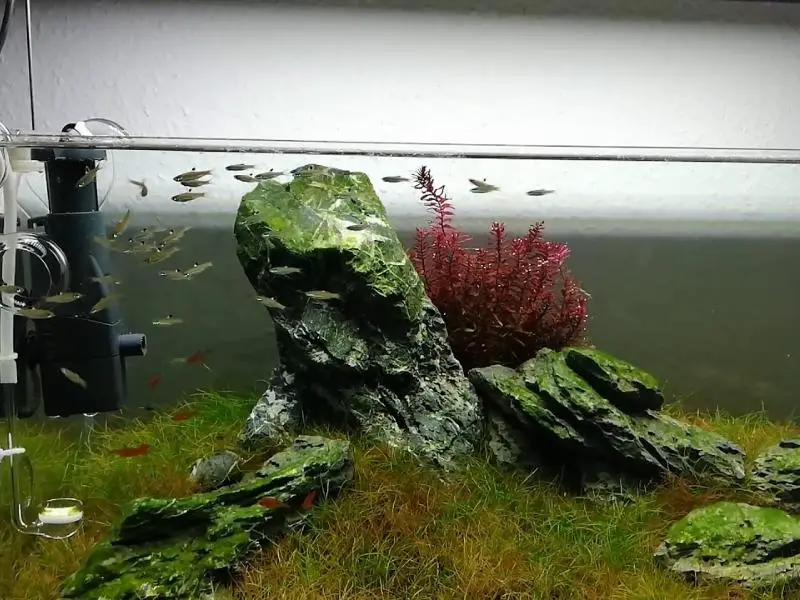
Emerald eye rasboras are quite hardy and are easy to care for. However, they do need a dimly-lit tank with a dark substrate and lots of plants to feel comfortable, and they do best in a group of other emerald eye rasboras.
These fish are not picky eaters and will eat various foods, including microworms, mini bloodworms, and fish flake food.
Habitat and Tank Requirements
To closely mimic the natural habitat of the emerald eye rasbora, use an aquarium tank with at least 10 gallons of water, though a larger tank is fine too.
The emerald eye rasbora prefers dim lighting and plenty of plants, including floating plants and driftwood, to hide in.
Use a dark-colored substrate, and since the fish’s natural habitat is streams and rivers, they are used to gentle water movement in the wild. Keep the tank water very clean for optimal health.
Tank Conditions
Emerald eye rasboras have specific tank requirements to keep them safe and healthy. Follow these instructions for the best results:
| Water type: | Freshwater |
| Tank size: | minimum 10 gallons |
| Water temperature: | 68–77ºF |
| Substrate: | Dark-colored and sandy. They prefer soft substrate with driftwood and dried leaf litter mixed in |
| Tank setup: | Plants, caves, floating plants, thick vegetation |
| Acidity: | 5.0–7.5 pH level |
| Water hardness: | 2–12 dGH |
| Filter: | Yes |
While 10 gallons is the minimum tank size, a larger tank is even better for the fish. Tank conditions should be mostly similar to emerald eye rasboras’ natural habitat and support their shy yet group-oriented personality.Emerald eye rasboras are quite hardy but they still have certain aquarium tank specifications for best keeping.
Disease
There are quite a few diseases that emerald eye rasboras are likely to get. Here are some of the most common ones and steps you can take to prevent problems:
- Fin and Tail Rot: The most apparent symptoms are fin and tail being discolored or ragged. Causes include too many fish in the tank, overfeeding, or other types of stress or food issues. To treat, clean out the water and check that the water pH level and temperature are correct. Antibiotics like Doxycycline Hyclate are sometimes used for treatment.
- Columnaris: The symptoms are whitish spots or patches on the fish’s body. Causes include incorrect water parameters, diet, and overcrowding. To treat, make the water in the tank a bit cooler, or try vaccines or antibiotics.
- Ich: This disease is marked by a slimy appearance in the diseased areas, and the fish’s body will look like salt was sprinkled on it. A fish may get sick if it’s in contact with another fish or something in the tank that’s infected. A rapid fluctuation in water temperature can also cause ich, in which case the tank’s water temperature should be slightly increased. The fish may also need medication.
Numerous other diseases can also affect emerald eye rasboras, including hole in the head, ammonia poisoning, slime disease, and fungal infections.
Tank Mates
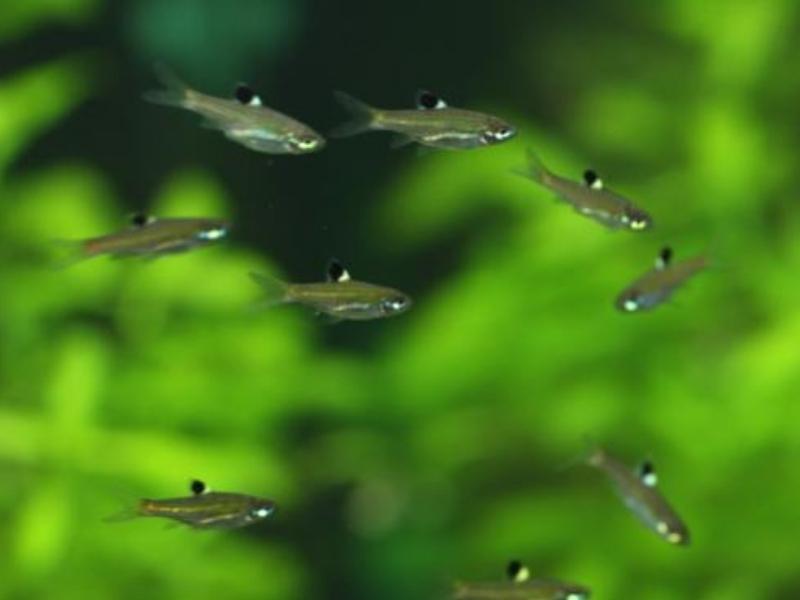
Emerald eye rasboras are popular because of their civil and calm nature. They make great tank mates with many other fish due to their easy-going temperament. Here’s a list of particularly good tank mates:
- Other emerald eye rasboras (a group of at least 6)
- Smaller rasboras
- Corydoras
- Kuhli loaches
- Small Gouramis
- Rainbowfish
- Other peaceful fish
Because emerald eye rasboras are so peaceful, they make wonderful tank mates for most fish.
Diet and Feeding
The emerald eye rasbora prefers a primarily omnivorous diet, though it can also eat plants. In the wild, the fish will eat what’s available, which ranges from zooplankton to crustaceans and insects.
Emerald eye rasboras should be fed every day, and will accept frozen, live, and freeze-dried foods. Feed the fish once or twice a day in small amounts that only take a few minutes to eat.
In an aquarium setting, emerald eye rasboras can be fed a variety of foods, including fish flakes, freeze-dried bloodworms and tubifex, and daphnia.
Emerald eye rasboras will accept many different foods, and they particularly enjoy insects, worms, baby brine shrimp, and cyclops.
The emerald eye rasbora prefers variety in its diet, so occasionally feed it fish flakes and other carnivorous foods.
Breeding
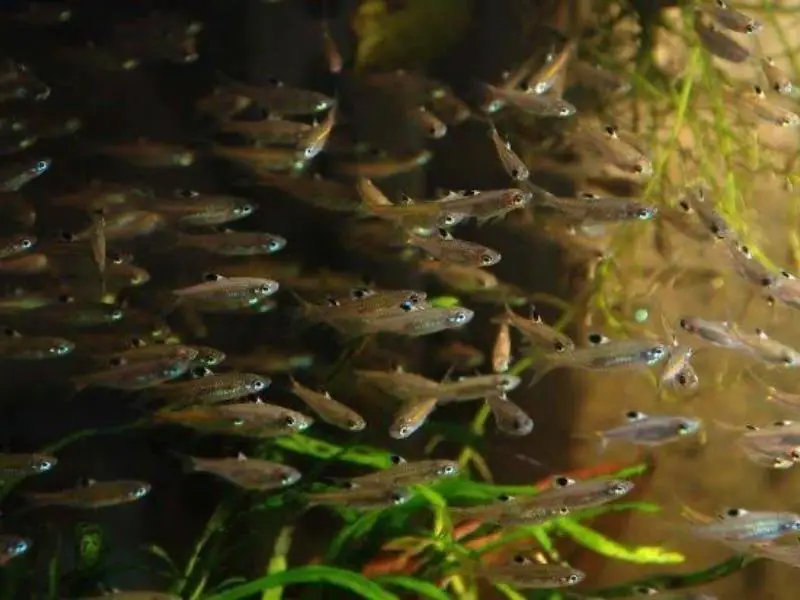
The emerald eye rasbora is an egg scatterer that lays eggs every day. Eggs are usually found in foliage and aquarium decorations.
If the eggs are fertilized, fry are born. Emerald eye rasboras possess no parenting instincts and will eat the young fish if given a chance.
To prevent the baby fry from being eaten, take precautions by placing the breeders into a new tank with a mesh barrier so eggs can fall to the bottom and through the mesh, so they won’t be eaten by the adults.
Aquarium grass also works in the same way. When ready, the female will look like she has eggs to lay. When this happens, add in a bit of cool water from time to time to encourage egg-laying.
A good sign of breeding is when the emerald eye rasboras take part in a sort of darting and chasing motion and then spawn.
Because emerald eye rasboras spawn often, breeding them requires little effort. However, keep an eye out for fry swimming around the tank, and remove them before they are eaten.
The eggs take only a couple of days to hatch, and will be 3–4 millimeters long, which is quite small. Be sure to remove adults from the breeding tank by the time the eggs hatch.
After the young fish eat their yolk sacs and hatch, feed them a diet of infusoria like Paramecium. Add baby brine shrimp and microworms once they grow a bit. They will get their full colors by 10–12 weeks.
Should You Get an Emerald Eye Rasbora for Your Aquarium?
Emerald eye rasbora thrive in groups, so if you want to keep this fish species, be prepared to care for several fish at once.
With enough time and some basic fish care skills, you should easily be able to add the emerald eye rasbora to your aquarium.
They are social and peaceful fish who get along well with other fish with relaxed personalities. With their stunning colors and easy temperament, emerald eye rasboras make a great addition to many aquariums.

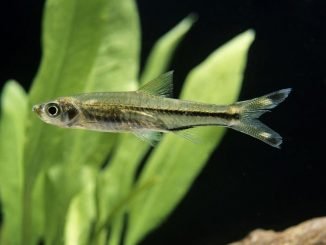
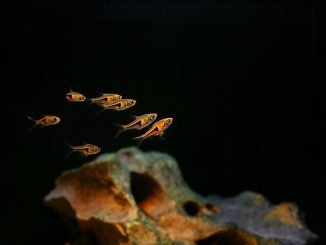
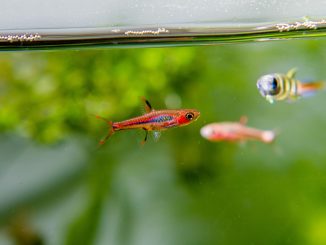
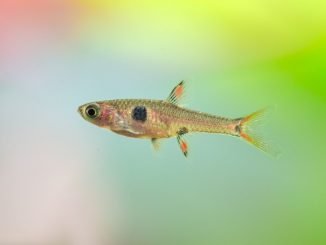
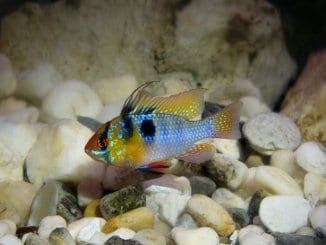
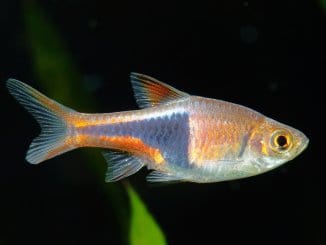
Be the first to comment